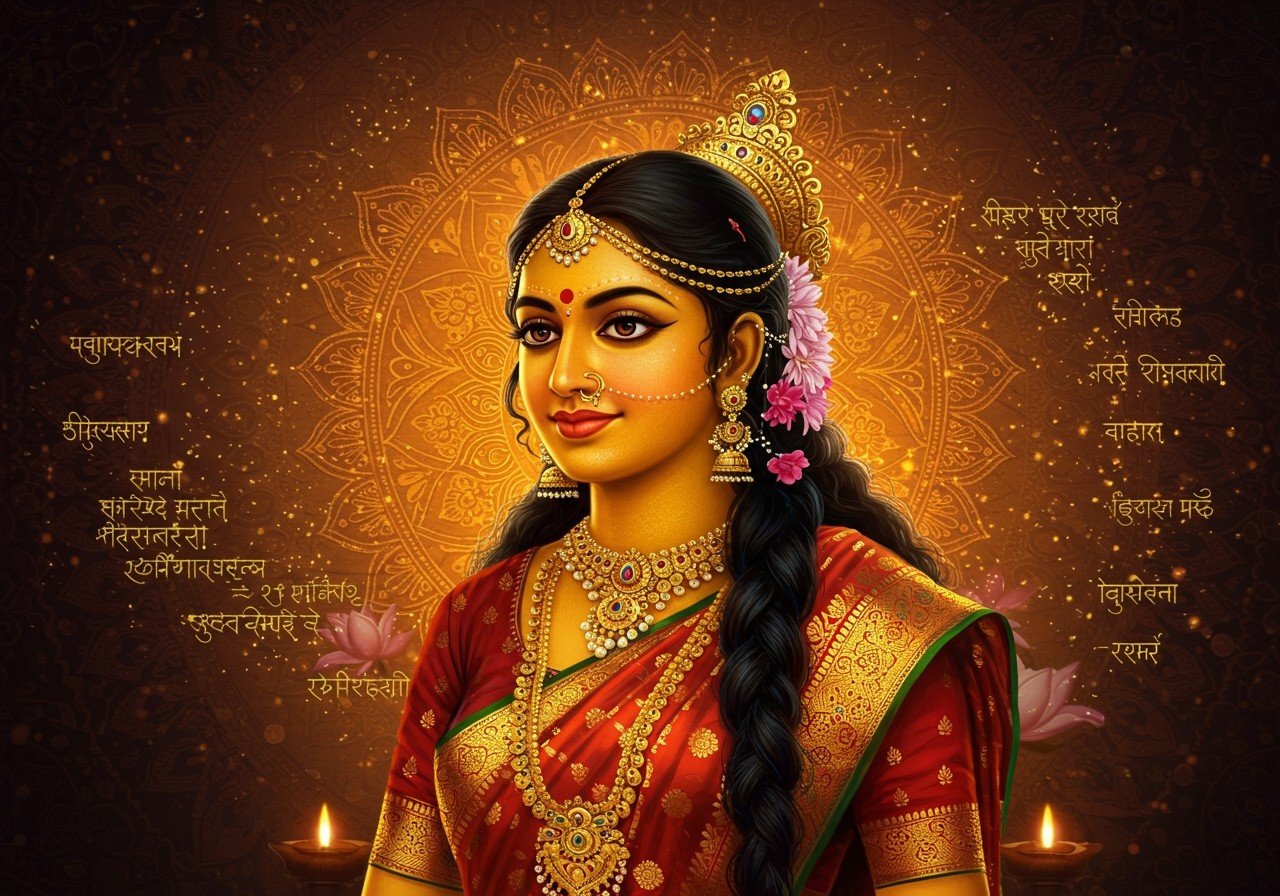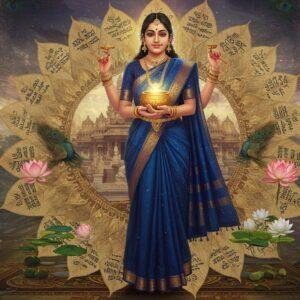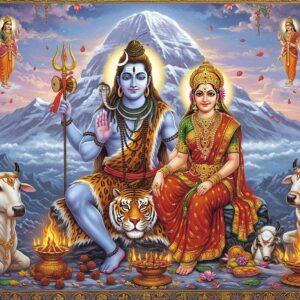
Valmiki’s Ramayana, a timeless epic, masterfully portrays the life and virtues of its characters. Sita, a central figure, embodies beauty, grace, and unwavering devotion. This exploration delves into the Ramayana’s descriptions of Sita’s physical attributes, providing insight into her revered appearance. Understanding these portrayals allows us to appreciate Sita’s significance within the epic narrative.
Sita’s Divine Stature
Ancient texts often employ metaphorical language to depict physical attributes. Sita’s height, for instance, is likened to celestial beings, underscoring her divine nature and reflecting cultural perceptions of height in that era. This association connects her stature to her relationship with Rama, emphasizing her elevated status and importance within the story. Learn more about Ramayana characters and the life lessons they impart.
Sita’s Radiant Complexion
The Ramayana describes Sita’s skin tone with poetic imagery, comparing her complexion to the purity of lotus flowers. This reflects the cultural significance attributed to skin tones in ancient Indian texts. Sita’s skin color symbolizes her inner virtues and divine origin, influencing artistic representations of her throughout history. Explore the concept of Dharma in the Ramayana for a deeper understanding of her character.
A Vision of Beauty: Sita’s Overall Appearance
The Ramayana portrays Sita’s appearance holistically, emphasizing features like her eyes, hair, and smile. Similes and metaphors enrich the visualization of her beauty, establishing her as an ideal of feminine grace. This depiction has shaped Sita’s image in art, literature, and popular culture across generations. Discover how the Ramayana offers timeless lessons for contemporary life.
The Symbolism of Sita’s Physical Attributes
Sita’s physical characteristics hold symbolic weight. Her beauty represents not only outer charm but also inner purity, strength, and moral integrity. The text connects physical beauty with spiritual virtues, reflecting broader cultural values. Divine intervention in shaping her appearance further marks her as an embodiment of the goddess Lakshmi. Explore the strength and modern relevance of women in the Ramayana.
Cultural Context and Evolving Interpretations
Sita’s portrayal aligns with the cultural landscape of ancient India, engaging with contemporary ideals of beauty and femininity. Her image has been reinterpreted throughout history, from classical to modern times, sparking ongoing discussions about beauty standards and cultural identity. Discover the significance of the Ramayana bridge and its exploration of myth and reality. Learn about the Ramayana’s enduring influence on Indian culture.
Sita’s Unparalleled Beauty: A Deeper Look
Valmiki’s Ramayana depicts Sita as possessing unmatched beauty, radiating divine elegance. Her captivating presence, even rivaling Rama’s, has inspired countless artistic interpretations, each striving to capture her radiant essence.
Golden Complexion and Inner Radiance
The epic often refers to Sita’s skin as *kanakavarnaangi*, signifying a golden complexion that symbolizes purity and divine grace. This highlights the cultural appreciation for a radiant glow, reflecting inner virtues and a celestial origin. Her radiant skin continues to be a benchmark of beauty in Indian culture. Enhance your own radiance with traditional alta at Poojn.in
Enthralling Hair: A Symbol of Beauty
Sita’s dark, flowing hair, known as *Neelakesi*, is often compared to a black snake, highlighting its richness and length. Adorned with regal headdresses, her hair symbolizes her noble lineage and enhances her grace, captivating artists and poets throughout time.
Mesmerizing Eyes: Reflecting Purity and Wisdom
Sita’s eyes, *Asithekshana*, are described as captivating and deep, often likened to a six-petaled black lotus (*Neelothpala*). These enchanting eyes mirror her pure soul and inherent wisdom. Descriptions of her lotus-petal-like eyes (*Padmapalaasakshi*) reinforce her gentle and compassionate nature.
Distinctive Features: A Portrait of Grace
The Ramayana meticulously details Sita’s features. Her teeth, resembling jasmine buds, symbolize purity. Her bright scarlet lips (*Bimbosthi*) reflect warmth. Her shapely waist (*Sumadhya*) represents feminine grace, and her well-proportioned figure embodies harmony. Embrace tradition with pure cotton sarees from Poojn.in, perfect for offerings and ceremonies.
Attire and Adornments: Reflecting Royalty and Virtue
Sita is often depicted in a traditional sari, signifying her virtuous character. Adorned with gold bracelets and anklets, her attire reflects her royal status. Her jewelry, whether crafted from precious metals or flowers, enhances her divine persona as an embodiment of beauty and virtue. Find exquisite jewelry for your spiritual practices at Poojn.in.
Symbolism and Cultural Significance: Enduring Ideals
Sita’s physical description is deeply symbolic, representing purity, strength, and moral integrity. These attributes embody broader cultural values, linking physical beauty with spiritual virtues. As an avatar of the goddess Lakshmi, Sita’s portrayal has shaped ideals of femininity across generations. Delve into the authorship and origins of the Ramayana to further understand its cultural impact.
Historical and Contemporary Influence: A Timeless Legacy
Sita’s portrayal aligns with ancient Indian beauty standards, influencing artistic expressions throughout history. From classical to modern times, she remains a central figure in discussions on cultural identity and beauty standards. Her enduring image inspires admiration and respect. Explore the cultural impact of the Ramayana across ages.
Honoring Sita’s Legacy with Authentic Ashoka Products from Poojn.in
The Ashoka tree holds profound significance in Sita’s story, as it provided solace during her captivity in the Ashoka Vatika. Poojn.in offers 100% pure Ashoka Chal (bark) from the sacred Saraca asoca tree (also known as Sita-Ashok and Asogam), available in various sizes (100g, 250g, 1kg, and single piece) starting at just ₹20, perfect for religious ceremonies and rituals. Explore Poojn.in’s extensive collection of pooja samagri, including pooja kits, utensils, decorations, Ayurvedic herbs, and holy attire.
Conclusion: Sita’s Enduring Impact
Sita’s appearance in the Ramayana transcends mere physical beauty; it embodies purity, grace, and strength. Her golden complexion, enchanting hair, and captivating eyes create an image of divine elegance that resonates across generations. Her portrayal as an embodiment of virtue continues to inspire admiration, reflecting her profound legacy in Indian culture. As we reflect on her story, we connect with rich traditions, honoring our heritage while looking towards the future. Celebrate ancient traditions with Ramayana festivals.
FAQs: Understanding Sita’s Portrayal
What was Sita’s height? While the Ramayana doesn’t provide an exact measurement, Sita is frequently described as tall and graceful, suggesting a regal presence.
What was Sita’s skin color? The Ramayana often uses the term *kanakavarnaangi* to describe Sita’s complexion, suggesting a radiant, golden hue.
How is Sita’s overall appearance described? Sita is portrayed as a vision of beauty and elegance, possessing a gentle demeanor. Her appearance is often compared to divine beauty, characterized by captivating eyes and a charming smile.
What specific features of Sita are emphasized? The Ramayana frequently mentions Sita’s lotus-like eyes and serene presence. Her beauty is depicted as both physical and spiritual, reflecting her inner purity and grace.
Why is Sita’s beauty significant in the narrative? Sita’s beauty symbolizes purity, virtue, and divine grace, qualities central to her character and the overarching themes of the Ramayana. Her outer beauty reflects her inner strength and moral compass.
Is Sita’s hair described in the Ramayana? Yes, the epic describes Sita’s hair as long, dark, and beautiful, adding to her enchanting allure. It’s often compared to a flowing black snake, emphasizing its length and luster.
What other attributes define Sita’s character? Beyond her physical beauty, Sita is known for her grace, kindness, unwavering devotion to Rama, and resilience in the face of adversity. These inner qualities make her a revered figure in Hindu mythology.
Explore the symbolism and teachings of the epic Ramayana.
Delve into the history, facts, and fiction surrounding the Ramayana.


